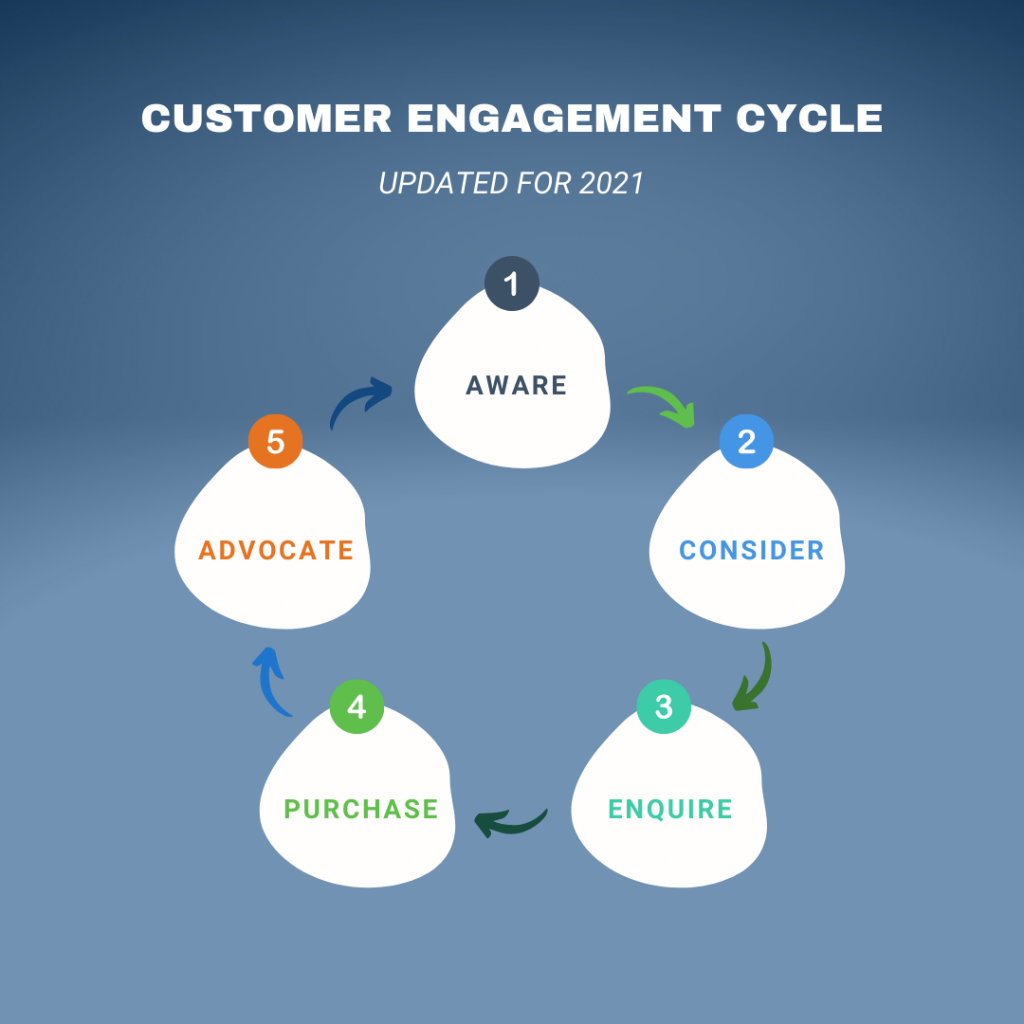Customer engagement; will you grab market share?
Customer engagement is an integral part of any businesses marketing plan. Have you factored in how to create touch points at each stage for your own customers?

This post was written in May, 25th 2011. It has been most recently updated in June, 2021. Happy belated 10th Birthday blog post.
What Is Customer Engagement?
Customer engagement is a term that is bandied about endlessly these days, and for once, it’s for good reason. It’s hardly surprising considering that we are now in the middle of the biggest shake-up in marketing’s history.
Organisations are starting to recognise that they need to execute an effective customer engagement strategy. If they do, they’ll be better placed to grab market share from their competitors.
The customer engagement definition in terms of online marketing is the way in which your business interacts with your customers (or potential customers). This definition can, and perhaps should also be broadened to include how your customers interact with each other.
The Customer Engagement Model
Below is an example of a customer engagement model, it tracks a customer’s buyer journey from the point that they become aware of your service or products, all the way to the “end” of the cycle where they begin to advocate for your business. Each of the point on this cycle ar optimal moments for you to create touch points with your potential customer, and that means it’s time to engage.
Awareness is not necessarily a hard thing to achieve. It is easy enough to catch someone’s attention, but to stay in the customer’s memory and build trust, enabling them to progress through the cycle, that takes extra effort.
To achieve this type of engagement, you need to get to know your customers in a meaningful way. This means working out the online places that they frequent and making your presence there. In addition to being present, customers respond best when they are both being listened to and conversed with, in meaningful ways.
Building your customer engagement strategy will take research and planning prior to execution. It will also involve monitoring and measuring the results to determine what works best in your marketplace. There are no easy ROI measurements when attempting to measure the effectiveness or the efficiency of customer engagement, at least not at the start.
The value of an engaged audience is still being widely debated, some two years (2009) after I wrote this original post. Where do you stand on the subject?
Updates From 2021
Customer engagement has exploded as a marketing tool over the last 10 years. There are plenty of amazing examples of companies, large and small putting it to practice via social media, face to face, email marketing etc, this list could really go on forever.
Engagement is now one of the top metrics for marketing teams across the globe, and for good reason. It has a place in almost every marketing book used in academic circles and it’s a subject discussed by some of the biggest influencers in Marketing today such as HubSpot and Neil Patel.
During this post we mentioned tracking down where your potential customers and clients will be, this is probably one of the most chaotic and differentiating parts of the the engagement cycle. Depending on what your trying to sell, you’ll have to work out where you’re best served to engage and this might mean pulling away from some of the more obvious areas.
Engagement is something that many businesses do as part of their sales process, a lot of effort might be put into the awareness piece or the purchase section and this is great, but for the best ROI – check that you are reaching out to them at each step of their journey.
- What have you got in place to beat out the competition in the consideration phase?
- Are you giving the potential customer the chance to contact you during enquiry?
- How are you portraying your business during enquiry?
- Do you have an after purchase process to turn those customers into advocates for your brand?
How Will Engagement Change In The Next 10 Years?
Here is the part where we grab the crystal ball out and try to tell the future. In 2031 when we take a look back at this post, what will we be saying about engagement?
We expect that it will look similar to how it does now in most ways. The importance of keeping up with where our customers or clients are on the purchase journey will still be at the forefront of marketers minds, but the tools that we use to reach that audience will likely have taken many strides forward.
We expect to see an increase in businesses using employee engagement tactics, this is something that businesses are already doing to a point (like business asking their employees to engage with the business on LinkedIn) but it’s likely that it will continue to expand.
One of the last points to mention is the demographics of customers with buying power. As with the previous 10 years, we will see changes in preferences by demographics – staying on top of this is really important for engagement strategy.
If you are in a bind wondering which opportunities you might be missing along the customer purchasing journey for engagement – give us a poke. Kittie and I love to discuss this topic and are more than happy to sit down with you and start building out your strategy with engagement in mind. You can reach us in the usual ways, at hello@avidmode.com or through our social media channels.
We look forward to speaking with you!
Other related blog posts that you might find interesting:
If you enjoyed reading this blog post, check out similar ones in the sidebar. Feel free to get in touch with to chat about your latest project ideas - we love a good excuse for more tea.

